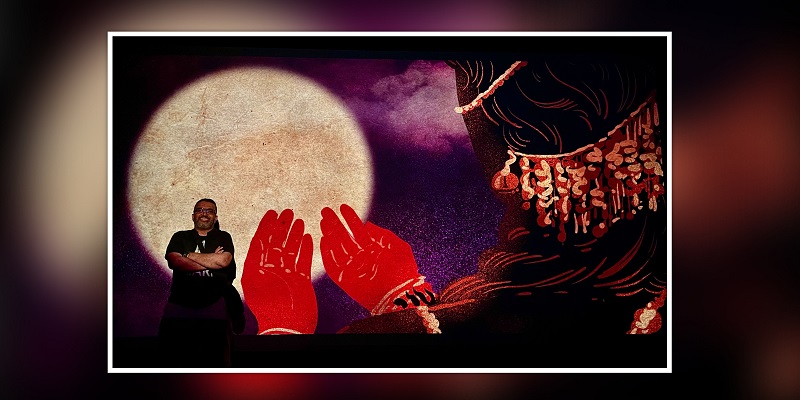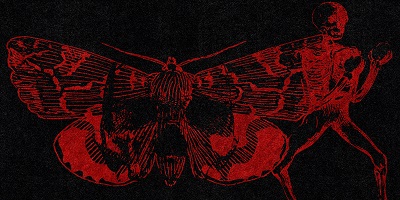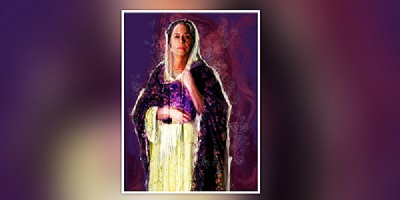Aafat-e-Ishq, the latest Bollywood directorial venture of renowned Ad-filmmaker Indrajit Nattoji harps on the theme of ‘magic realism’ inspired by illustration styles of retro-lithographic Indian pulp book-cover. Be it the opening title-design sequence or the major fantasy sequence, the film is knitted with marvelous works of animation, digital hand-painting and visual effects. The Zee5 original starring Neha Sharma magnifies how animation and special effects play an integral role in breathing life into such tales.
“The film’s treatment is like a graphic novel, and the story is like a modern-day fable. The film is layered with elements of dark humour, magic realism, and fantasy metaphors. For example, the character of Atma is a ‘pisach’ (ghoul) that feeds on one’s insecurities. His colourful filmy appearance is belied by his dark metaphor for isolation and mental illness,” Nattoji told Animation Xpress in a detailed interview.
Aafat-e-Ishq currently streaming on the OTT platform is an adaptation of the award-winning Hungarian film Liza and the Fox Fairy, which is totally molded as per Indian sensibilities. A fantasy tale within the film plays an integral part in the plot of this supernatural romantic thriller.
Sharing the narrative that leads us to the ethereal world created in the film, the director said, “Lal Pari, a story created by my writer Neha Bahuguna and me for Aaaft-e-Ishq, is based on tragic love stories of mythical courtesans in Indian folklore. In the film, Shok Sundari was a beautiful courtesan who wielded considerable power in an ancient kingdom. She falls in love with a condemned man. Subsequently betrayed by him, she kills him. Shok Sundari becomes a ‘Lal Pari’, a forest nymph cursed to be lonely forever, for anyone falling in love with her soon dies. Lallo, the protagonist of the film, is an avid reader of romantic pulp novellas.
In the course of events, she finds a book titled ‘LAL PARI’ (The Red Fairy). The book has an illustrated fold-out poster that Lallo puts up in her room and becomes obsessed with. Soon her life becomes fraught with disasters when her suitors meet with mysterious accidental deaths, and she becomes the prime suspect. Lallo, who is always in her own world of romance and magic, tells the story to her ghostly friend Atmaram and the audience enters the world of ‘Lal Pari’, in a graphically illustrative animation sequence.”
The animation, titles and graphics for the film were executed by Nattoji’s own production house, Blink Pictures. The ‘Lal Pari’ animation had Priyankar Gupta as the illustrator and animator, Nattoji being the director of animation.
“To create this animated sequence, I went through many artists’ portfolios, and finally, Priyankar Gupta’s vibrant illustration work caught my eye. I researched the illustration styles of retro-lithographic Indian pulp book covers, based on which I commissioned and supervised Priyankar to create book covers for ‘Lal Pari’ and then visualised a storyboard based on the script. I shot the fantasy sequence with my actor Neha Sharma, and the edited footage was then digitally hand-painted and animated by Priyankar in illustrative ‘Indian Pulp’ book print style,” he revealed.
The National Institute of Design alumnus who recently created a hand-painted music video for Kavita Seth’s Rangi Saari and exhibited his paintings in art galleries in Kolkata and Mumbai, took care of the feature film’s creative direction for the team. He further mentioned that the film has a ‘bold graphic opening title-design sequence which has ghostly paper etchings edited with typography’. The end title design sequence is a series of animated Hindi pulp book covers illustrated by the director himself. The overall typographic packaging of the film alludes to that of a book.
“The in-film graphics and typography were done by Akash Raichura and Rayna Batvia, respectively. Hand-painted moths were executed by Swapnil Mestry, which were then animated by the VFX studio. Tushar Sabharwal, my chief assistant director, oversaw the post-production and VFX from my side,” Nattoji said.
Talking about the various software used in the movie, the expert with over 22 years of experience shared, “Procreate, Adobe Photoshop and After effects were used for the illustrations and artistic rotoscope for the ‘Lal Pari’ animation and ‘Film Title Design’ sequences. The in-film graphics were done on Photoshop, while the composites and VFX were done by Post House using a combination of 3D and hi-end compositing software.”
According to him, animation can be both an individual art form and a collaborative process.
“The range of animation techniques and style that a story demands can be immense. It can be a simple line drawing by a lone artist to a complex, hugely mounted animation that requires collaborative skills of several 3D, 2D artists and varied technologies. But whatever the means, one has to tell a good and engaging story at the end of the day,” he opines.
Dropping hints of his upcoming works which will again have breath-taking visual moments, Nattoji said, “I have commenced a film installation project for a museum on the journey and birth of India as a republic. I cannot reveal much about the project, but it is an exciting, immersive audio-visual experiential project that involves animation, film, music and sound design. Further, I have created visual design and VFX for a feature film soon to be released on a leading OTT platform. I am also in pre-production for my next feature film.”
When asked if he would be making a feature length animation film, he said, “I would love to but the investment of time and effort required for an animated film is tremendous, which I hope I can brave at some point in my career.”





